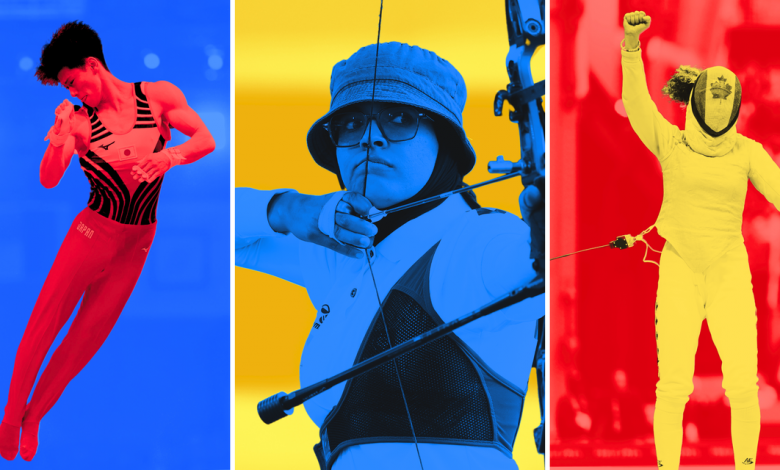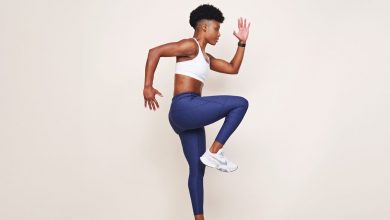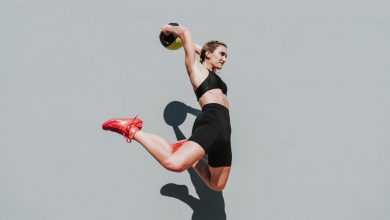All Your Little Questions About the Olympics, Asked and Answered

As we’re watching the 2024 Paris Olympic Games, the amazing feats of all the incredible athletes are obviously top of mind. But sometimes there are some other (lower-stake) happenings that worm their way into our thoughts too. And let’s just say, we’ve racked up a lot of questions as the Paris Games have been unfolding.
We took a deep dive into some of the quirks, technicalities, and other defining factors that make each sport stand out. Go ahead, give the list a read—we bet you’ve had the same burning questions as well. And keep checking back here throughout August; we’ll continue to update this story with more questions and answers throughout the Games.
Why is the track purple?
One perk of hosting the Olympics is getting to design the aesthetics of the Games, and the French take this role seriously. The Olympic Committee designed what they’re calling “The Look of the Games by Paris 2024” to give the entire city (plus Tahiti and other French competition sites) a unifying look and feel—running track included. The colors of this year’s Games are blue, red, green, and purple, and if you’re updating the stadium track for a global audience, why not add a splash of color?
As for why purple, the answer is simple: The Parisian Olympic Committee wanted to be iconic. They summed it up in a press release, explaining that the purple surface, “will allow the images of the Paris 2024 Games to be engraved in the memories of spectators, television viewers, and athletes alike.” And Mondo, the Italian company that created the running surface at the Stade de France incorporated another pillar of the “Look of the Games” into the track: Sustainability. This track gets its bounciness from the Mediterranean–specifically ground-up mussel and clam shells. Paris will be the first time athletes reach their dreams of gold on a striking purple background powered by shellfish.
Why are Australia’s uniform colors green and yellow, when their flag is red, white, and blue?
We may be tuning in to see medals won and records smashed, but we’re also here for the fits. And it’s hard not to notice that the Australian team is repping quite a different color scheme than their red, white, and blue flag.
It turns out that the country’s national colors are gold and green. Gold represents, well, the hardware the athletes hope to bring home (also wealth, sandy beaches, an ample grain harvest, and the sunny hue of Australian wool). The vibrant green represents the country’s lush forests and fields, famous gum trees, and ‘horizons of growing crops.” If you take a closer look at the Aussie uniforms, you’ll also see each is designed with Indigenous prints. According to the Australian Brand, Team Australia’s wardrobe represents “the largest integration of Indigenous artwork on athlete uniforms in Australian Olympic history.”
Does the Olympic cauldron in Paris have real fire in it?
At the very end of the 2024 Olympic opening ceremony, two French athletes—sprinter Marie-José Pérec and judo athlete Teddy Riner—ignited a giant cauldron of what appeared to be fire in the iconic Jardin des Tuileries in the center of Paris. The nearly 23-foot fiery ring, which is attached to a giant balloon, burns in the Tuileries each day of competition and floats 200 feet into the air each night, letting all of Paris get a good view. Don’t worry, there’s no fire hazard here; the flame is an illusion created by misting water and light known as EDF. According to NPR, this is the first year the Olympic cauldron doesn’t contain a real flame. Turns out, it takes 200 water misters and 40 LED bulbs to keep the Olympic “flame” flickering, according to The New York Times.
What’s up with the water polo caps and ear covers?
Water polo is a high-contact sport: Imagine competing with 13 gold-motivated Olympians for a hold on the same ball—in a pool, no less!—and you might want to take some protective measures, too. Head and ear injuries are fairly common in water polo matches, and ear guards are an important safety measure for players. The rounded ear coverings buffer players from the errant elbow of a fellow player, and protect against scrapes and cuts as well as more serious eardrum injuries and even cauliflower ear—a condition that results from repeated blunt trauma to the ear. Aside from safety, the ear guards also keep player’s ears dry, which can make it easier for teammates to communicate during the bustle of a match—especially underwater.
What’s in that mysterious box medalists get at the podium?
If you’ve stuck around after a competition for the post-event ceremony, you’ve probably clocked the mystery box athletes receive along with their bronze, silver, or gold. The unassuming cardboard box is about a foot long—but inside there’s no trophy, baton, or magical wand inside. Turns out, it’s a commemorative Paris 2024 poster. And you don’t need to clinch any Olympic hardware yourself to get your hands on one: They’re $32 at the official Olympic shop.
Why are the Olympics held every four years?
We can thank the ancient Greeks for bringing us the Olympic Games—and for making us wait four years to see our favorite swimmers and gymnasts on the global stage. According to the International Olympic Committee, time was measured in four-year blocks called Olympiads. Today’s Olympic schedule pays tribute to the ancient calendar.
Why do male gymnasts’ uniforms look like footie pajamas?
For one, as WFLA reports, the footie pj’s are actually stirrup pants and socks. And the choice of uniform is actually for good reason, as Ian Gunther, a four-time NCAA champion at Stanford, explained in an informative TikTok two years ago. While demonstrating on different apparatuses, Gunther says it all has to do with safety and judging.



